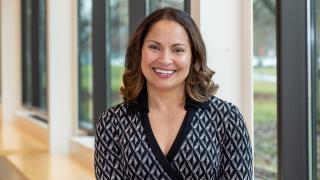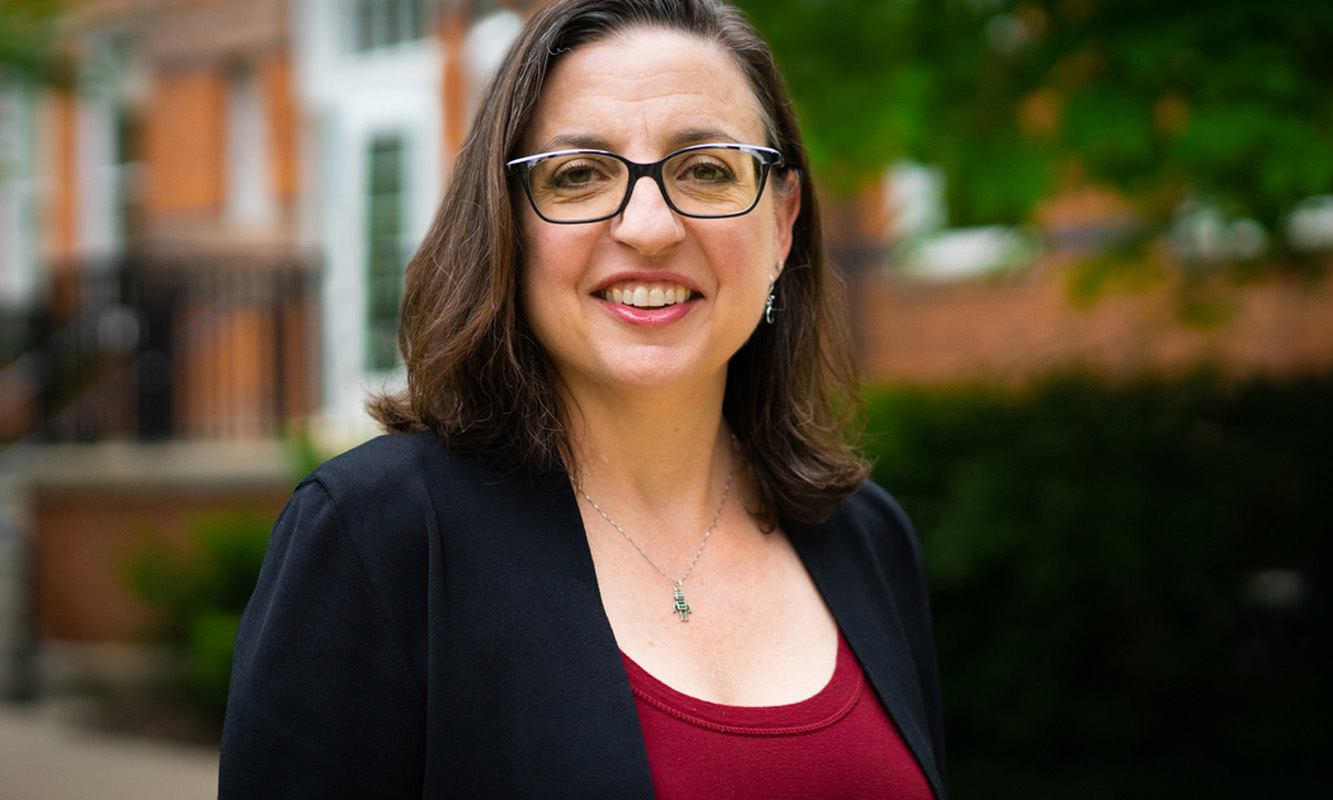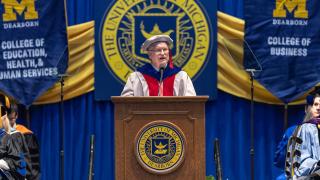
The idea that the American public is increasingly skeptical of — and sometimes outright hostile to — the work of colleges and universities is a growing concern not just for those in the higher ed community but for many who worry about the implications for American democracy. Michigan State University’s Kathleen Fitzpatrick is among those sounding the alarm, and on Tuesday, the Director of Digital Humanities and Professor of English visited UM-Dearborn to share a thought-provoking approach for countering this current in American culture — and for reestablishing the public's trust in universities. As with past speakers in our Strategic Planning Thought Leader Series, we’ve summarized a few of the big takeaways from her visit, in case you missed it.
Framing education as a ticket to personal advancement is problematic
First things first: Fitzpatrick isn’t dismissing the notion that the public’s decreasing trust in higher education institutions has been stoked by a decades-long political movement to weaken trust in public institutions at large. But she also argues that the way we frame the value of higher education isn’t helping. In particular, we emphasize the personal benefits of higher ed — often as a gateway to a good job, or in the case of the humanities, as a means of personal enrichment and growth. But the acceptance of this idea, Fitzpatrick argues, has some unforeseen consequences. “As long as a university education is assumed to have predominantly personal rather than social benefits, it will be argued that making such an education possible is a private, rather than public, responsibility.” She says we shouldn’t be too surprised then that as we’ve embraced this “privatization” of education’s benefits, we’ve seen state governments steadily decrease their support and shift the burden onto families and students. In other words, if you want to argue for public investments in higher education, Fitzpatrick says you have to reframe its value in terms of benefits to the public, not private individuals.
The humanities are an early bellwether of the ‘devaluation’ of higher ed
Fitzpatrick argues that accepting the idea that higher education’s benefits are largely individual also has set up a mechanism for devaluing it. We see this most glaringly in the humanities — a collection of fields that is often mocked as impractical, especially when it comes to preparing students for careers. (Notably, Fitzpatrick points out that recent surveys show humanities students don’t disproportionately struggle to find employment and quickly close the pay gap with their engineering peers.) This narrative has nonetheless taken hold with students, parents and administrators, leading to a steady erosion of the humanities at universities across the country. But Fitzpatrick warns this trend likely won't stop with the arts, literature and philosophy. “Where once the world understood mostly that scientific research and the kinds of study that support it are crucial to the general advancement of knowledge, recent shifts in funder policies suggest a growing scrutiny of that work’s economic rather than educational impact — as well as a growing restriction on research areas that have been heavily politicized. So the humanities may well be the canary in the higher education coalmine.”
Getting beyond the faculty culture of individualism
Fitzpatrick says this emphasis on the individual is also a central dynamic of faculty life. She describes the environment as driven by a “competitive individualism,” in which faculty are in constant competition with one another for research dollars, tenured positions and prestige. Further, this environment is nurtured by a reward system that’s largely concerned with individual achievements. One of the main consequences, she argues, is that faculty are discouraged from using their energy and expertise for ends that fall outside this value system, such as serving on committees or pursuing community collaborations that won’t result in publication. “This is no way to build solidarity among academic units, across categories of academic employment, or between the academy and the communities with which it engages. And perhaps that’s the point. Perhaps we’re locked into this endless competition with one another in order to keep us distracted from the work we could do if we truly joined together.” To do the latter, Fitzpatrick argues we need create new “social” paradigms for valuing faculty work that are distinct from traditional measures of individual achievement, like the size of research grants or the prestige of publications.
A public university should actually engage with the public
So what’s the alternative? Fitzpatrick argues all of these challenges point us toward reforms that recast public higher education institutions as publicly focused entities that are active members of communities in which they are located and that produce highly visible, consequential benefits in those communities. This can happen in at least two ways. First, faculty can orient more of their work — research or otherwise — toward problems or issues that originate in the communities they serve. (UM-Dearborn public health professor Natalie Sampson’s ongoing work in Detroit’s Delray neighborhood is a clear example of this.) Second, universities can do a much better job of sharing their work with their communities. Why, Fitzpatrick argues, would we expect the public to value faculty work, if the main way of disseminating that work is through academic journals read only by their colleagues? Instead, we need to break down the walls that divide universities from their surrounding communities and cultivate regular opportunities for everyone to enjoy their diverse resources.
“My model for this is the University of Wisconsin and the Wisconsin Idea. Since the late 19th century, the University of Wisconsin has really understood the university as not just belonging to the people of the state, but being a source of profound knowledge development that could be put at the service of the people of the state,” Fitzpatrick says. “So every academic unit on that campus has public programming that takes the work that they do out into the field: All of the music programs perform in every county in the state in a given year; the English department hosts a program that brings together high school teachers from every public school. And in this way, the people of the state of Wisconsin came to really understand the role that the university plays in all of their lives. So as Scott Walker tried to take the institution apart — slash the budget, break the union — the protests outside the capitol weren’t just folks that worked at the university. It was people who believed that the institution supported the work of the entire state. Community members said, ‘You can’t do this to our institution because that university belongs to us.’ And we need to cultivate that by taking our work out into the world.”
###
Kathleen Fitzpatrick is the author of Generous Thinking: A Radical Approach to Saving the University, published by Johns Hopkins University Press (2019).






